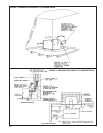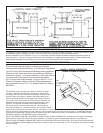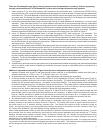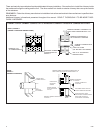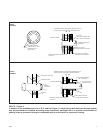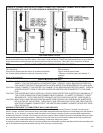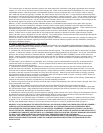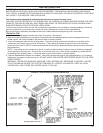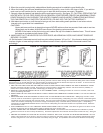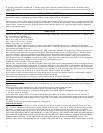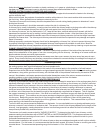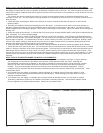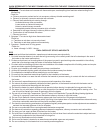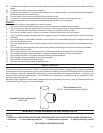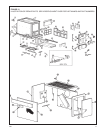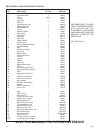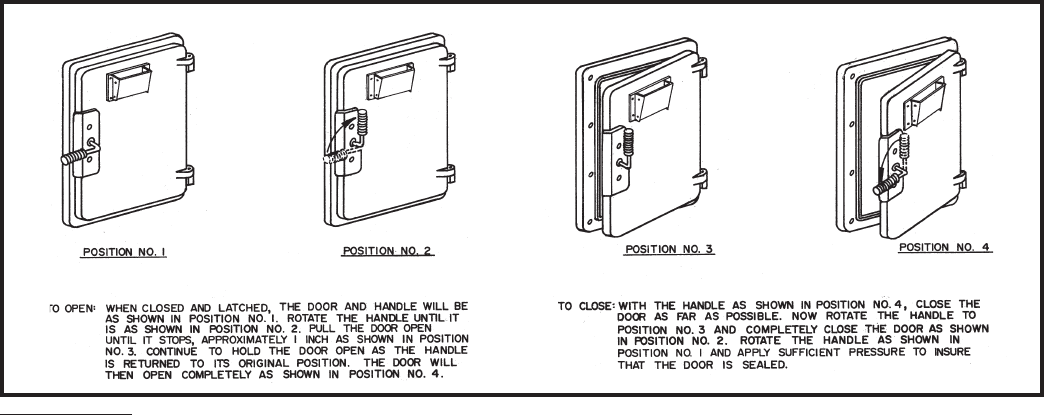
CAC 11
FIGURE 10 - OPENING AND CLOSING FUEL FEED DOOR
5. When the wood is burning briskly, add additional kindling as required to establish a good kindling fire.
6. When the kindling fire has been established and is burning briskly, cover it with a thin layer of coal. If you add too
much coal you will smother the fire, requiring you to start the whole process over again. Be patient.
7. Securely close the heater’s fuel feed door as the coal begins burning. See figure 10. CAUTION: OPERATING THE
HEATER WITH ITS FUEL FEED DOOR OR ASH REMOVAL DOOR OPENED CREATES AN ABNORMAL FIRING
CONDITION WHICH CAN OVERHEAT THE HEATER, CHIMNEY AND ADJACENT COMBUSTIBLE MATERIALS.
THIS CAN DRASTICALLY SHORTEN THE HEATER’S LIFE AND VOID THE FACTORY WARRANTY.
8. Wait about ten minutes, or until the coal is burnign well, then start adding small quantites of coal at ten minute
intervals until a good doal fire is established.
CAUTIONS:
-Never add more coal than is already burning and NEVER add more than ten pounds of fresh coal at one time.
-When fresh coal is added, ALWAYS leave some of the glowing coals uncovered.
-NEVER fill the heater so that the burning coal is above the top of the heater’s chamber liners. This will cause
the heater to overheat and will shorten its life.
8. MAKE SURE THAT THE HEATER’S FUEL FEED DOOR, ASH REMOVAL DOOR, AND CABINET DOOR ARE
SECURELY CLOSED.
10. Set the heater’s thermostat control knob to a point midway between “HI” and “Lo”. If the house or heating situation
requires a higher or lower setting to obtain the desired amount of heat, adjust the heate’s thermostat control knob
accordingly.
FIRETENDING
Firetending is the occasional poking or stirring of the burning coal bed to ensure airflow through the coal bed and adding fresh coal as needed.
With experience, you should determine how often firetending is required to maintain the desired heat output of the heater. To ensure safe and
satisfactory performance of the heater, the following rules should be observed:
1. KEEP THE FUEL FEED DOOR AND ASH REMOVAL DOOR CLOSED EXCEPT WHEN TENDING THE FIRE OR REMOVING ASHES.
Operating the heater with either of these doors open can cause the heater to dangerously overheat and will increase the possibility of
smoke, ash or sparks escaping the heater and damaging the dwelling or its contents.
2. NEVER FILL THE HEATER ABOVE THE TOP OF THE CHAMBER LINERS. Overfilling the heater can cause it to overheat, create a fire
hazard, and damage the heater.
3. NEVER OPEN THE FUEL FEED DOOR WITHOUT FIRST TURNING THE THERMOSTAT CONTROL KNOB TO “HI” FOR AT LEAST 30
SECONDS.
4. NEVER ADD MORE THAN TEN POUNDS OF FRESH COAL TO THE HEATER AT EACH REFUELING. Adding large amounts of fresh
coal can cause an accumulation of gases above the fire that can cause backpuffing. Backpuffing can occur whenever concentrated gases
accumulate over the fire bed and then catch fire quickly. This may cause smoke and flame to be expelled from the heater during firetending.
Under rare conditions, backpuffing can be severe enough to break apart poorly connected chimney connector pipes. If backpuffing is
experienced, see TROUBLESHOOTING section of this manual. Backpuffing is an abnormal condition and a potential hazard. Determine
and correct the cause.
5. TURN THERMOSTAT TO “HI’ FOR 15 MINUTES AFTER ADDING FRESH COAL TO A FIRE. This allows the gases to be driven off and
shortens the length of time the dense smoke is likely to deposit soot on the chimney walls.
6. DO NOT TAMPER WITH THE INTERNAL THERMOSTAT MECHANISM. The thermostat has been designed and calibrated to porvide
continuous contrrol of the fire for sefety and efficiency. Thermostat adjustments are made with the thermostat control knob only. See figure
9.
7. PREPARE THE HEATER TO HOLD FIRE ALL NIGHT BY LOADING IT WITH COAL AT LEAST AN HOUR BEFORE BEDTIME. Burn the
heater at the normal rate for for this hour, then turn it back to a slower burn just before going to bed. This procedure will help drive excess
moisture and gases out of the coal and minimize soot buildup during the night. This procedure also minimizes the liklihood of backpuffing.



